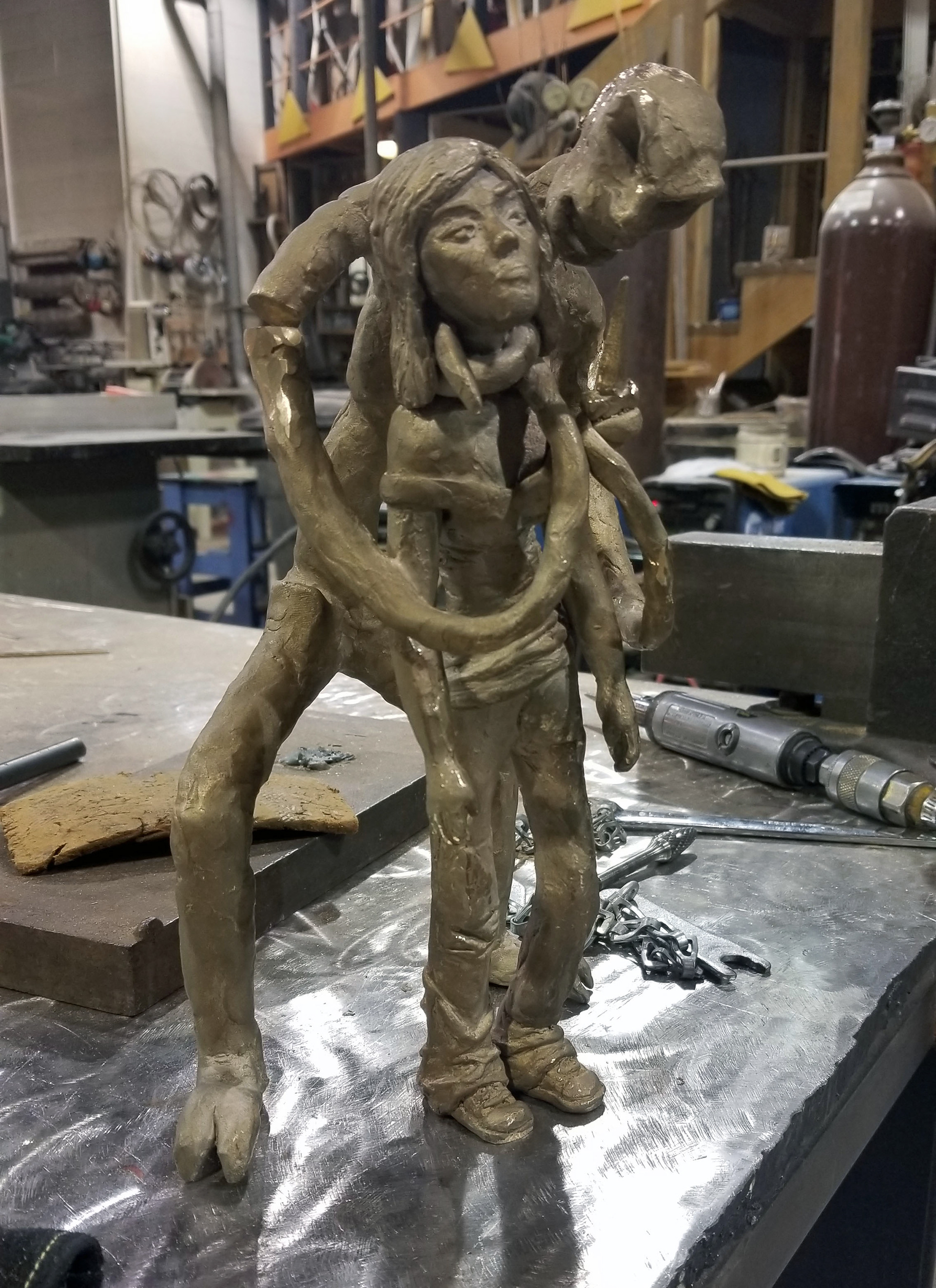





These 6 photos roughly document the bronze casting process. The first image is the wax carving I made. The 2nd is the sculpture split into the two separate figures with wax bits attached to create a system for which the bronze will eventually be poured into. The 3rd image is one of the figures clamped in for easier grinding. The fourth image is from just before the two bronze sculptures were attached. The 5th after they were attached and in the background you can see the 2nd int he sculpture series waiting to be attached. The last image is after the sculpture had the patina applied and the wax buffed.
The three of these together is interesting because at first glance it's hard to see how they fit together. But then you start to see the same basic shape: something that is wide and then tapers to a point. I think they work better as separate pieces.



For this one we had to make a series of cups with a common theme and each one with a different technique applied to them. Growing up as a swimmer I have always loved the water and there are so many ways to depict water. The first one is a lightly carved and heavily painted wave. The second one uses more textured carving to create seaweed. The third is carefully carved undulating ripples of a drop of water.
Here we had to throw a series of cups or bowls and then carve some design into it. I decided to make Japanese tea bowls and carve a flower into the bottom. Unfortunately the glaze was too thick so it's difficult to see the carving in most of the bowls. I added this because learning that things you make might not end up how you wanted them is a very important lesson.
This is the oldest piece here. It's a small conceptual installation called Rusty City. Each tube is representative of a skyscraper and I purposely haphazardly painted red iron oxide with no other glaze to give it that dusty rust look. It's a symbol of decay and rot. As an artist symbolism and conceptualization are important.